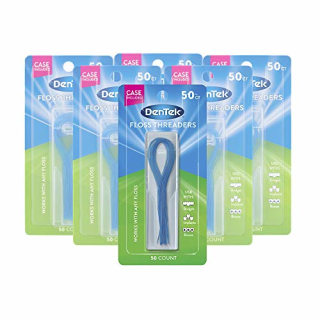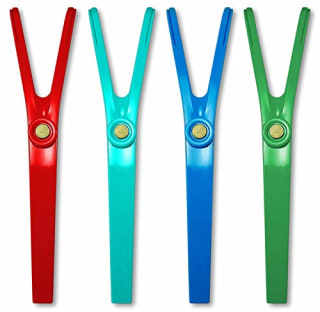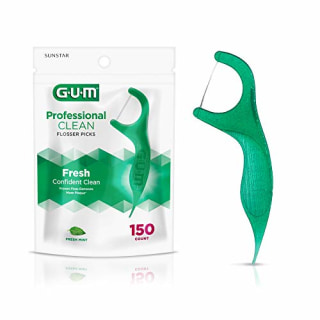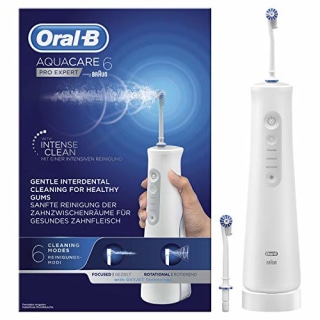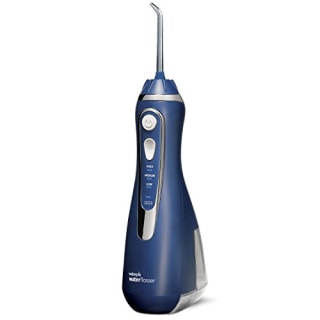Ever since we first started going to the dentist, we've been hearing about the importance of flossing, but that doesn't make this simple task any less annoying. Flossing only takes two minutes, but it's one of those steps in our bedtime routine that many of tend to dread because we're strapped for time or can't stand it when our gums bleed.
Still, flossing is pretty important and it can even help prevent a range of dental issues. So this year, Shop TODAY is vowing to give it another try. To help jumpstart our flossing routine, we consulted the pros for some technique tips and even asked them to share a few of their favorite products to make flossing more bearable.
Why is flossing important?
We all know how useful flossing can be when you've got some food stuck between your teeth, but this often ignored task also has a range of other lesser-known benefits.
"Flossing is essential to maintaining a healthy smile, protecting your teeth and gums and preventing yourself from exposure to other dental-related complications," Dr. Jasmin Henville, DMD, Aspen Dental practice owner in MA, said.
It might not seem like a big deal to leave some food remnants in between your teeth, but when left unattended, bacteria can build up and form plaque.
"Plaque biofilm can become unhealthy, turning into a virtual 'petri dish' for bacteria that can begin to express themselves harmfully (called pathogenic bacteria). This leads to the progression of gum disease," biologic dentist and founder of Rejuvenation Health and Rejuvenation Dentistry Dr. Gerry Curatola told Shop TODAY.
It takes more than a toothbrush to properly remove plaque, and flossing can keep your teeth and gums strong and help prevent cavities.
How often should you floss?
You might only go to the dentist once or twice a year, but it's the day-to-day maintenance that keeps your teeth in good shape, and flossing daily is a huge part of that.
"The formation of interdental plaque biofilm forms approximately every 24 hours, so minimally, you should floss once daily. However, it's a good idea to floss both morning and night as the accumulation of food debris between teeth is a ripe environment for the formation of unhealthy plaque biofilm," Curatola explained.
If you ever feel lazy and don't want to carve out two minutes to floss, consider this analogy from Curatola: "I often compare leaving food debris between teeth to leaving garbage between buildings on a New York City side street on a hot summer day. Before you know it, it stinks and the rats come out to feed on it (yuck!)."
How to get better at flossing
Flossing isn't rocket science, but finding the right technique that works for you does take a bit of trial and error. We asked the pros to share a few of of their best tips:
- Know the basics: "Hold the floss tightly between the thumbs and forefingers and gently insert it between the teeth. Curve the floss into a 'C' shape against the side of the tooth," Henville said.
- Be gentle: "Do not snap the floss between teeth. Instead, gently slide 'back and forth' on the sides of each tooth in a gentle 'lasso' by rubbing the floss along the sides of the teeth before gently removing the floss through the contact of the two teeth," Curatola said.
- Use enough floss: "Use about 18 inches of floss wound around one of your middle fingers, with the rest wound around the opposite middle finger," Henville said.
- Baby your more sensitive teeth: "Never 'yank' or pull the floss back up quickly between your teeth, especially under a crown, inlay, filling or any other dental restorations," Curatola said. "Instead, gently slide the floss down towards the gum margins of each tooth and when finished cleaning the sides of the teeth, simply pull the floss straight out and do not pull back up towards the top of the tooth called the marginal ridge."
Flossing products to consider
Oral-B Glide Pro-Health Comfort Plus Dental Floss
Traditional floss is a medicine cabinet essential and Dr. Jennifer Jablow, a celebrity dentist and founder of the teeth whitening brand intelliWHITE, swears by this one that's focused on comfort. "It gets into the tightest spots and doesn’t hurt like others can if your gums are sensitive. If you are cavity-prone, put a small bit of your toothpaste on the floss to help get it into the tight areas where the toothbrush misses," she said.
Cocofloss Coconut-Oil Infused Woven Dental Floss
Prefer natural products? There are plenty of dental brands focused on clean ingredients. "If you have trouble sliding the floss between the teeth, try a natural waxed floss that goes between teeth more easily. This one from Cocofloss is made from coconuts," Curatola said.
Gum Proxabrush Go-Betweens Ultra Tight
Need something a bit more heavy-duty than string floss? Curatola swears by proximal brushes. "Often shaped like small Christmas trees, these brushes can fit in the embrasure space at the gum line between teeth for effective removal of interdental plaque biofilm," he said.
DenTek Floss Threaders
If you have tight teeth, braces or dental bridgework, flossing isn't always so easy. That's where floss threaders come in handy. "These devices 'thread the floss' — similar to a needle and thread — and are very effective to get through and/or under a closed contact area," Curatola said.
Flossaid Dental Floss Holder
If you're looking to branch out from traditional floss, floss holders are a nice way to switch things up a bit. "They have a handle to hold, and are often made with pre-loaded floss to slide between teeth," Curatola explained.
Gum Professional Clean Flossers
"Pre-threaded floss holders are convenient and great for when you're on-the-go or if you have trouble holding floss between your fingers," Henville said. These ones from Gum have a F-shaped handle that's easy to grip and can easily clean out those teeth in the back of your mouth that are hard to reach.
Gum Dental Picks
Dental picks, in particular, can do a lot more than remove plaque. Henville prefers these ones from Gum that come with an on-the-go storage case. "Dental picks are made of wood or plastic and are specially designed to remove plaque and stimulate blood flow in your gums," Henville said.
Oral-B Aquacare Pro-Expert Dental Water Jet Technology with Oxyjet
Sometimes, flossing can be physically challenging for those with dexterity issues, and there are plenty of devices like this one that can help. "The bristles in this device clean the teeth surfaces and the specially designed mirror pulse cleans deep between the teeth," Henville said.
Waterpik Cordless Water Flosser
According to Jablow, the most efficient way to floss is with a water flosser, and this one wins the dentist's seal of approval. "I like this cordless, rechargeable Waterpik flosser. It’s easy to handle and takes up little counter space," she told Shop TODAY.
Spotlight Water Flosser
"Water flossers use a stream of water to clean between teeth and are a good option if you have trouble with your grip, have braces or had other treatments like implants or bridges," Henville said. Spotlight's Water Flosser is an affordable cordless, rechargeable option that includes four tips and three operating modes.
For more stories like this, check out:
- Can't make it to the dentist? Here's what you should do in the meantime
- This electric toothbrush is perfect for anyone who hates to floss
- From air purifiers to touch-free tools, 16 useful gadgets that 2020 popularized
To discover more deals, shopping tips and budget-friendly product recommendations, download the new TODAY app and subscribe to our Stuff We Love newsletter!




